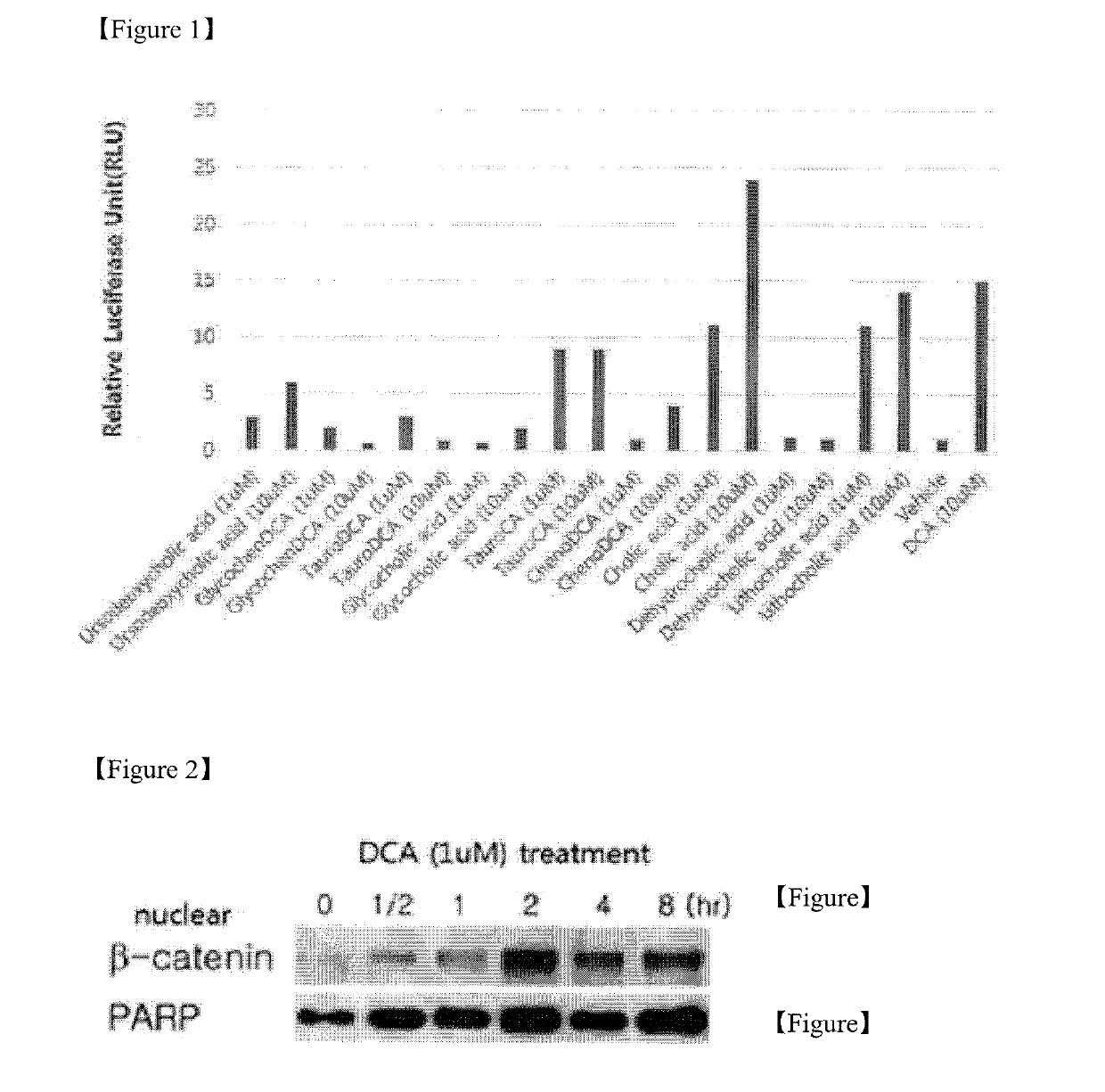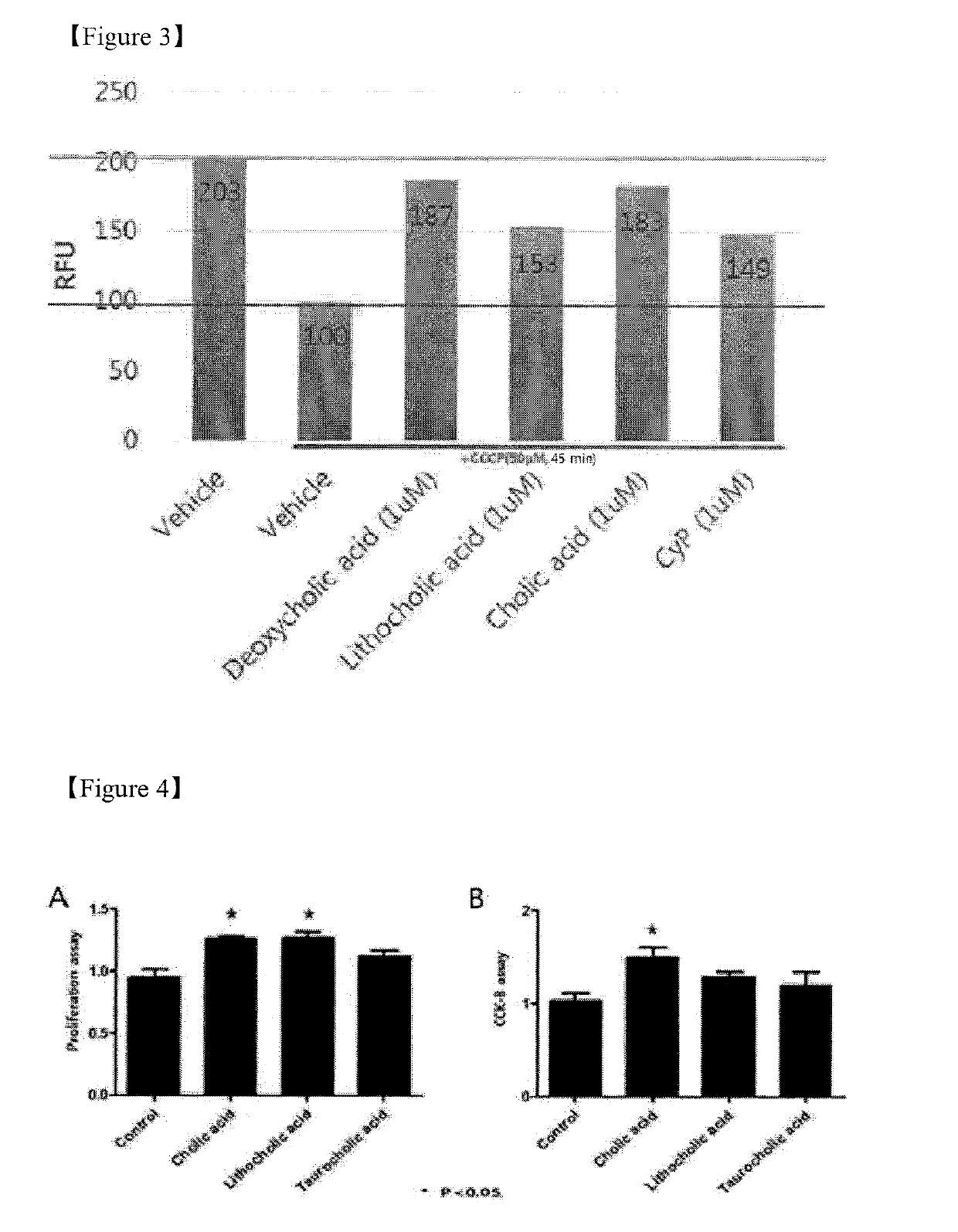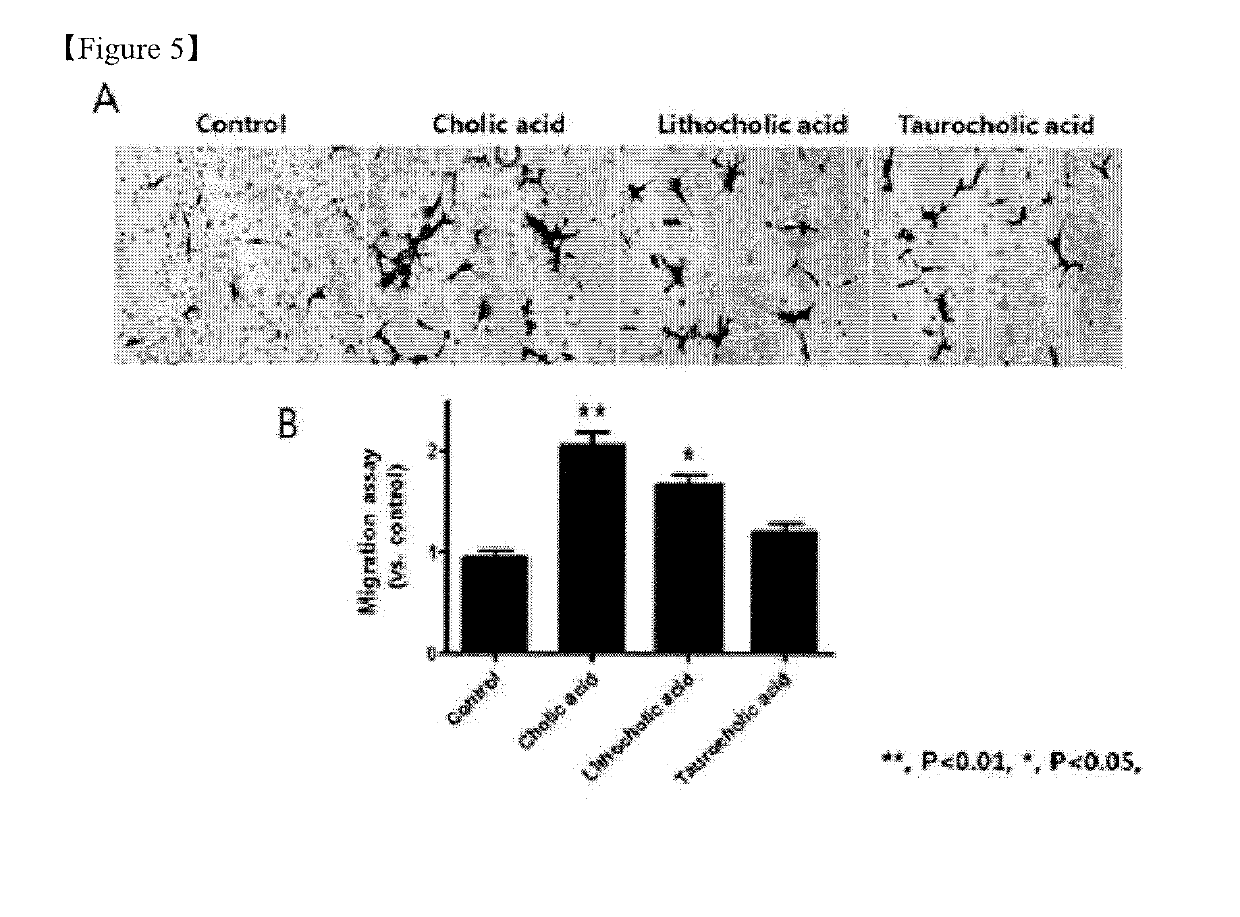Pharmaceutical composition for preventing or treating ischemia-reperfusion injury, containing bile acid
a technology of bile acid and pharmaceutical composition, which is applied in the direction of drug compositions, cardiovascular disorders, dispersed delivery, etc., can solve the problems of tissue necrosis, irreversible injury of cells, lack of blood supply, etc., and achieve the effects of reducing the size of infarcts, preventing, treating or alleviating ischemia-reperfusion injuries
- Summary
- Abstract
- Description
- Claims
- Application Information
AI Technical Summary
Benefits of technology
Problems solved by technology
Method used
Image
Examples
example 1
of Effect of Bile Acid on the Intranuclear Beta-Catenin Level
[0057]1.1 Screening for Discovery of Agonist to Beta-Catenin
[0058]Experiments were conducted to identify drugs with an enhancement effect on beta-catenin by analyzing the effects of various kinds of bile acid on the intranuclear beta-catenin level. Nuclear beta-catenin luciferase assay was performed to examine effects of treatment with ursodeoxycholic acid, glycochenodeoxycholic acid (GlycochenDCA), taurodeoxycholic acid (TauroDCA), glycocholic acid, taurocholic acid (TauroCA), chenodeoxycholic acid (ChenoDCA), cholic acid, dehydrocholic acid, lithocholic acid and deoxycholic acid (DCA) on the change of the intranuclear beta-catenin level.
[0059]Specifically, TCF / LEF reporter_HEK293 cell line (BPS bioscience) was used. The TCF / LEF reporter_HEK293 cell line is a stable cell line in which luciferase is cloned into the TCF / LEF promoter (beta-catenin-binding promoter) in the nucleus. When the level of luciferase is measured aft...
example 2
ation of Protective Effect of Bile Acid on Mitochondria—Inhibition of mPTP Opening
[0065]In order to examine the effect of cholic acid, lithocholic acid, and deoxycholic acid on the mitochondria, which were confirmed to have an effect of increasing the beta-catenin levels in Example 1, TMRM (tetramethylrhodamine, methyl ester, perchlorate) staining method was performed. TMRM is a fluorescent marker that stains normal mitochondria.
[0066]Specifically, 293T cells were treated with 1 μM and 10 μM of cholic acid, lithocholic acid, and deoxycholic acid. After 1 hour, the cells were treated with CCCP (chlorophenylhydrazone, 50 μM), which induces similar stimulation to reperfusion into mitochondria to open mPTP and to induce polarization. Thus, mPTP opening and depolarization of mitochondria were induced. After 45 minutes, the cells were washed with PBS, stained with TMRM, and measured using a fluorescent reader. The measurement results are shown in FIG. 3. Cyclosporine A (Cyp), which is a t...
example 3
ation of In Vitro Cell Proliferation Effect and Cell Migration Effect of Bile Acid
[0069]3.1 Identification of In Vitro Cell Proliferation Effect of Bile Acid
[0070]Experiments were conducted to examine cell proliferation effects of TauroCA, cholic acid and lithocholic acid among bile acids. Thus, human umbilical vein endothelial cells (HUVECs) were treated with 1 μM TauroCA, cholic acid and lithocholic acid. The cell counting method and CCK-8 staining method were performed to identify cell proliferation effects 24 hours after the treatment with TauroCA, cholic acid and lithocholic acid. The results of these experiments are shown in FIGS. 4A and 4B.
[0071]As shown in FIG. 4A, the proliferation assay indicated that cholic acid and lithocholic acid had more significant cell proliferation effects than the control group. As shown in FIG. 4B, the CCK-8 assay indicated that cholic acid had significant a cell proliferation effect. Therefore, it was confirmed that cholic acid and lithocholic a...
PUM
| Property | Measurement | Unit |
|---|---|---|
| total weight | aaaaa | aaaaa |
| thickness | aaaaa | aaaaa |
| total volume | aaaaa | aaaaa |
Abstract
Description
Claims
Application Information
 Login to View More
Login to View More - R&D
- Intellectual Property
- Life Sciences
- Materials
- Tech Scout
- Unparalleled Data Quality
- Higher Quality Content
- 60% Fewer Hallucinations
Browse by: Latest US Patents, China's latest patents, Technical Efficacy Thesaurus, Application Domain, Technology Topic, Popular Technical Reports.
© 2025 PatSnap. All rights reserved.Legal|Privacy policy|Modern Slavery Act Transparency Statement|Sitemap|About US| Contact US: help@patsnap.com



